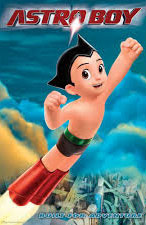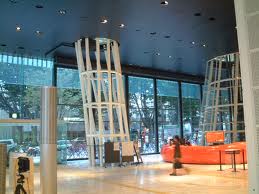 Digital Creation in Asia and Oceania
Digital Creation in Asia and Oceania
Australia: see notice
Beijing: the China museum of digital art (Cmoda).
China see notice
India: promising grassroots
- A rich and ancient culture. More recently, Bollywood develops a tradition amounting to several decades in software and digital arts. Literature on Indian art focusses generally on traditional art, with no mention of digital art or of the grassroot kinetic art of Ganesth. A typical book on this line: Indian Art by Roy C. Craven (Thames & Hudson).
-
Index of Indian artists presented in diccan.
< Speech, Sound and Music Processing: Embracing Research in India by Sølvi Ystad, Mitsuko Aramaki, Richard Kronland-Martinet, Kristoffer Jensen, Sanghamitra Mohanty. Lecture Notes in Computer Science. Volume 7172. Springer, c. 2012.
- Computer Arts (2/2011) "discovered, in India, a graphical stage in full effervescence, fighting against global occidental, style homogenization, and digging down its own roots. (Our translation). Four pages.
- Design Iatra festival.
- Bombay: Theaters of automata on the annual Ganesh (or Ganapati) day. See [Grimaud].

Astroboy, a typical example or a kind robot always ready to help humanity.
Japan: smiling robots
French observers, even having lived in Japan for decades, do not pretend to understand this fascinating civilization. It's depicted by a lot of books. Many of them, like Arthur Koestler or Hermann von Keyserling, express contradictory feelings of love and hate. Japanese are at the same time free-minded and strongly socially formatted.
A particularly dense and informative texts is Device art : a new approach in understanding Japanese contemporary media art, by Machico Kusahara 29 pages in [Grau]. "Probably the most notable feature is a playful and positive attitude toward technology, rather than a negative and critical stance". (This was written in the early 2000's. Fukushima has perhaps changed that).
In sex matters, for instance, their open attitude contrasts with the prudish America, but falls nearly at the same time in sado-masochistic themes. That is both a result and a cause of a particularly dramatic history. Twice raped by the US marines, but unforgivably remorseless invaders. It is now stunned by Fukushima, a natural disaster in the tradition of the land, but amplified by nuclear breakdowns...

A gigantic model of Gundam peacefully dominated center Tokyo in the 2000"s.
Robots hold a very specific status in Japan. In nearly all other countries, robots fascinate but with a strong negative drive (see our notes about robots in art). Here they are mostly seen as friendly partners, as well in industry (for instance, in the Glory society, see an article in Challenges (5/24/2013, in French) as life companions, let alone sex partners. If the singularity is to happen anywhere, it will be in Japan since this country, at the same time, makes very few children and does not favor immigration. Then its population is ageing, and robots more and more necessary in production as well services to persons and entertainment.
At the end of 20th century, Japan made several attempts to challenge the US digital domination, for instance the Tron operating system, industrial production of software or artificial intelligence ("The 5th generation).
In digital arts, Japan is strongly present. Yoichiro Kawaguchi for instance, is nearly every year in Siggraph, with its warm smile and indefinite, frequently humorous, creativity. In Laval Virtual, Japanese student teams bring each year the core of the "emerging technologies" session. But less than 50 Japanese artists are listed by diccan.

Pet robots like the WRobot, for aged persons as well as for children.
-
Index of Japanese artists presented in diccan.
- In the 80's, Nikograph show.
< Anime and philosophy. Wide eyed wonder. ed. by Josef Steiff and Tristan D. Tamplin. Chicago, Open Court 2010.
< Tokyo Cyber-Punk. Post-humanism in Japanese visual culture. by Steven T. Brown. Palgrave Macmillan 2010.
< Otaku. Japan's Database Animals. by Hiroli Azuma. University of Minnesota Press. Minneapolis 2009 (Japanese original, 2001)
< Device art: a new approach in understanding Japanese contemporary media art. 29 pages in[Grau]. About contemporary Japanese digital art.
< Japanese visual culture, by Mark MacWilliams (ed.). M.E. Sharpe 2008.
< Faire de la bande desssinée, by Scott McCloud (Delcourt 2007), some precise pages about manga making and drawing
< L'imaginaire érotique au Japon. by Agnès Girard. Albin Michel 2007.
< The ethics of aesthetics in Japanese cinema and literature. by Nina Cornyetz. Routledge 2007
< Japanese graphics now, by Gizela Kozak and Julius Wiedemann (eds.) Taschen 2006.
< Japanamerica, How Japanese pop culture has invaded the U.S. by Roland Kelts. Palgrave Macmillan 2006.
< Culture Manga, by Fabien Tillon. Nouveau Monde 2006.
< Crééz votre shojo sur ordinateur, Yishan Studio. Dunod/Pika 2009.
< L'esthétique du temps au Japon. Du zen au virtuel. by Christine
Buci-Glucksman, Galilée, Paris 2001.
< 1910-1970. Japon des avant-gardes. Françoise Bonnefoy ed. Editions du Centre Pompidou 1986.
More ancient, about Japanese civilization in general:
< L'ambiguïté en japonais écrit. by Maurice Coyaud. Association pour l'analyse du folklore, P.A.P. Paris 1985.
< Le lotus et le robot. by Arthur Koestler. Calmann-Lévy 1961
< Journal de voyage d’un
philosophe. by Hermann Keyserling. Stock – Delamain et Boutelleau, Paris
1930.
< The Unexpected. (1928) and The Cinematographic Principle and the Ideogram (1929). in Film Form, by Sergei Eisenstein. Harcourt Brace, New York 1949. About kabuki, ideograms, etc. A quotation: "The Japanese cinema is excellently equipped with corporations, actors and stories. But the Japanese cinema is completely unaware of montage. Nevertheless the principle of montage can be identified as the basic element of Japanese representational culture."
- Around Hiroki Azuma, a whole post-modern philosophy comments these new developments. One of his works has been translated in French Génération Otaku. Les enfants de la post-modernité. Hachette 2008 (Japanese original 2001)
- About Japanese animes and mangas, the Minnesota University ogranizes each year the Mechademia conference, and publishes its proceedings (Francis Lunning ed. ):
.1. Emerging worlds of anime and manga. 2006,
.2. Networks of desire. 2007,
.3. Limits of
the human. 2008,
.4. War/Time. 2009.
To be published:
.5. Fanthropologies,
.6. User Enhancement,
.7. Lines of Sight.

Sendai: the media library.
Osaka: Kanzai Air Terminal, by architect Renzo Piano.
Sendai Media library.
Tokyo
- Japan Media Arts Festival.
- ICC (NTT InterCommunication Center).
-
Professional chapter of the ACM Siggraph
- Universities in Tokyo.
Yokohama: Internal space of maritime terminal, by Foreign Office Architects [Picon] p. 89
Other Asian countries
Bangkok (Thailand). Professional chapter of the ACM Siggraph
Manila(Philippines). Professional chapter of ACM Siggraph
Seoul (South Korea)
- In 2011, Digital Baths.
- Nabi Art Center
- Siggraph Asia 2010. See The trailer.
-
Media City
Singapore:
- Worldwide festival.
-
Professional chapter of the ACM Siggraph (Siggraph Asia was held there in 2008 and 2012).
Songdo (Korea): Indaf festival
Taipei (Taiwan):
-
Professional chapter of the ACM Siggraph
- Tourist roads of Alishan
- At least one artist, Zhan Jia-Hua.
Yogyakarta (Indonesia)
- Festivals: CellsButton and YIVF (Yogyakarta international videoworks festival)
-
The Honf (House of natural fiber).
